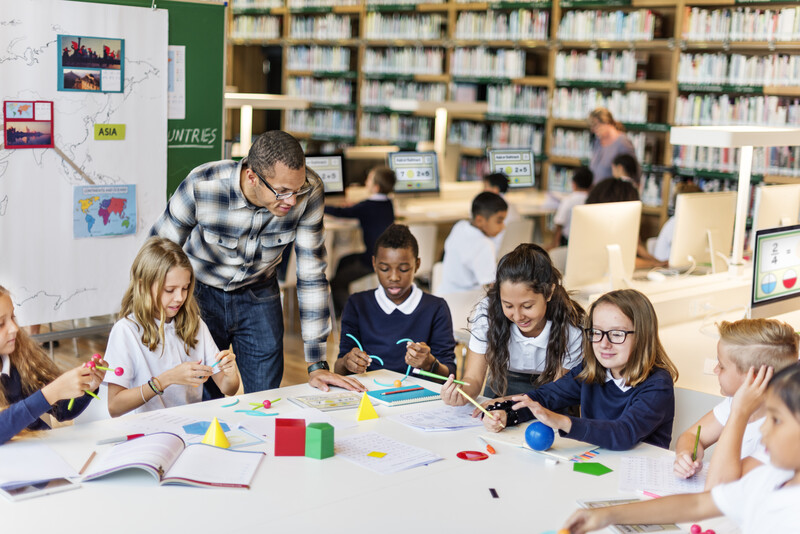Requiring students to practice skills has gotten some bad press. This may result, first of all, from a misunderstanding of the theory of constructivism, which states that learning is an active constructive process in which students generate their own understanding of content. Some may conclude that structured practice somehow violates that principle (see Anderson, Reder, & Simon, 1995).
But this is not the case. During their schooling, students need to master a variety of skills, strategies, and processes—what we refer to as procedural knowledge. Skills are specific, as in knowing how to correctly punctuate a sentence or a paragraph. Strategies are broader, such as knowing how to edit a composition to ensure effective transitions between paragraphs. Processes are broader still and comprise both skills and strategies. For example, writing a composition is a process that includes the skill of punctuating correctly and the strategy of editing for transitions. Learning such skills, strategies, and processes requires practice.
Another misconception about practice is that simply having students work through a number of problems or tasks that involve a particular skill, strategy, or process qualifies as effective practice. In truth, the value of practice depends on several factors (Institute of Education Sciences, 2007).
Unlocking the Power of Practice
Consider the Stage of Learning Required
Learning a skill, strategy, or process involves stages. During the first stage, the learner is aware of how the skill, strategy, or process works but is not really able to do it. During the next stage, the learner begins to execute the procedure but must think about it consciously while doing so, often making errors along the way. During the final stage, the learner masters the procedure to the extent that he or she can execute it with little or no conscious thought. This is called theautonomous stage.
Not all procedural knowledge addressed in the course of a school year requires students to progress to the final phase. If a mathematics teacher wants students to experience using a specific strategy for analyzing data, such as creating a stem-and-leaf plot, but does not expect students to learn it to the level of automaticity, little practice is necessary. However, if the teacher expects students to create such plots in the future with little or no assistance, then practice is essential.
Use Varied Examples
Teachers should alternate examples that have their solutions worked out with "nonworked" examples so that students are exposed to both. This strategy is called "interleaving" worked examples (Institute of Education Sciences, 2007).
A teacher using this strategy might present students with 10 math problems during a practice session. Five would be worked out as examples of correct ways to solve the problem, but the remaining five would not. It might seem that having students work through all 10 problems on their own is better practice, but research has shown that interleaving solved problems with problems that students must solve on their own is more effective (Catrambone, 1998; Renkl, Artkinson, Maier, & Staley, 2002). It most likely helps students to discern the underlying principles for solving specific types of problems as opposed to approaching problems as a series of steps to perform algorithmically.
Another form of interleaving is to alternate slightly different versions of the problem. For example, while providing practice in the skill of capitalizing, the teacher might intersperse problems that exemplify different rules for capitalization. In contrast, presenting a set of problems that require the application of the same capitalization rule and then shifting to a set of problems that require the application of a different capitalization rule is referred to as blocking. Interleaving often has more positive results than blocking does (Taylor & Rohrer, 2010).
Have Students Think Aloud
Teachers can ask students to analyze their thinking in the context of interleaving worked examples. While students solve the nonworked examples, the teacher can ask them to explain the thought processes that led them from step to step. In addition, the teacher might ask students to explain causal relationships inherent in the skill, strategy, or process they are practicing: Why do you have to do x before y? What would have happened if you'd done x instead of y? Why is it important for you to do x as opposed to y (Rosenshine, Meister, & Chapman, 1996)?
Space Practice Sessions Appropriately
A teacher might intuitively think that it's best to always space practice sessions closely together. This is not necessarily the case (Institute of Education Sciences, 2007). Research has shown that students should begin by practicing material in sessions spaced closely together but then should experience increasingly longer intervals of time between practice sessions (Cepeda, Pashler, Vul, Wixted, & Rohrer, 2006).
For example, right after introducing a procedure for computing the area of irregular shapes, a teacher might follow up with brief practice sessions the next two class periods. The teacher might then wait a week to have a third practice session and then wait three weeks to have a fourth, making sure that students have at least one practice session a week before the summative assessment on the procedure.
Tried and True
Practice has always been, and will always be, a necessary ingredient to learning procedural knowledge at a level at which students can execute it independently. Careful planning that takes into account these four considerations can unlock the power of practice.



